How to Measure Instagram Performance? [2026]
Table of contents
Nara Smith is one of the most trending influencers this year. She has a following of 4.3M on Instagram and an estimated social media reach of over 35M. Her Instagram performance is on fire!
Fans can’t get enough of her content, and the proof is in the numbers – over the past 30 days, there have been 611 user-generated posts inspired by Nara. It’s safe to say she’s sparked a real Nara-movement!
But how about you? Do you know how your content is performing on Instagram?
Read on to discover the best ways to measure your Instagram performance!
Instagram performance shows how well your content engages your audience and reaches potential followers. It’s crucial for optimizing your strategy and growing your presence. You can measure it using metrics on visibility, engagement, and reputation.
Below, I’ll share the key metrics and strategies you should use to measure Instagram performance effectively, supported by real-life data and examples.
What is Instagram performance?
Instagram performance is all about how well your content (Instagram posts, stories, or reels) is doing on the platform.
You can simplify it into getting likes, comments, or shares and how much your content is reaching people.
But it’s actually so much more!
There are 2 billion active users on Instagram, which makes it really hard to stand out on the platform. You need to monitor your actions and improve if needed.
And that’s exactly what you need performance tracking for!
Measuring your performance helps you understand what’s working, what’s flopping, and what to change to keep your audience hooked.
Measuring Instagram performance is necessary to:
- Track what content your audience loves the most (Instagram Reels, regular posts, or stories).
- Spot trends and understand what gets people talking.
- Optimize your strategy for growth (reach more people!).
- Boost engagement by focusing on what works best.
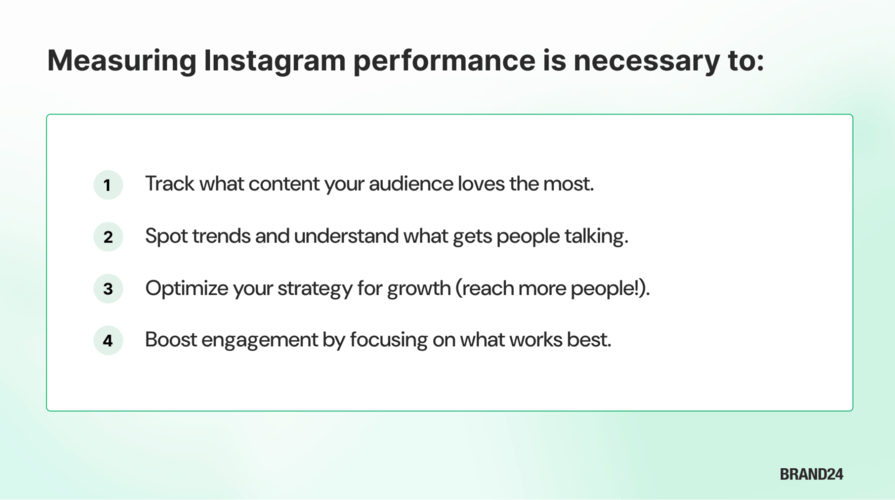
How to measure Instagram performance?
To measure Instagram performance, you need to track various metrics related to:
- Engagement
- Visibility
- Reputation
Some of the basic metrics are measured internally in the Instagram app.
You can access them if you have an Instagram business profile, so make sure to change your setting to that to gather data!
Now, let’s go through each of these metrics:
01 Social media and non-social reach
Social media reach represents the total number of unique users who have seen your content. It’s a crucial metric that shows the size of your potential audience.
Thanks to measuring social media and non-social reach, you will find out:
- Which types of content resonate most with your target audience and boost engagement?
- Seasonal patterns or trends are crucial for brand visibility.
- Your audience demographics to tailor your content better.
- The effectiveness of paid advertising.
- Competitive analysis for better market positioning.
- Changes in reach and sentiment to identify and respond to potential PR crises early.
Social media reach tells how far the content is spreading on platforms like Instagram and TikTok, while non-social reach covers other sources of online mentions.
By measuring both, you can improve the visibility of your brand across different channels.
It will help you understand your brand’s presence and identify which strategies, formats, or even times to post are the most reach-efficient.
How to measure?
You can check how many views your Instagram profile got in the internal “Insight” section:
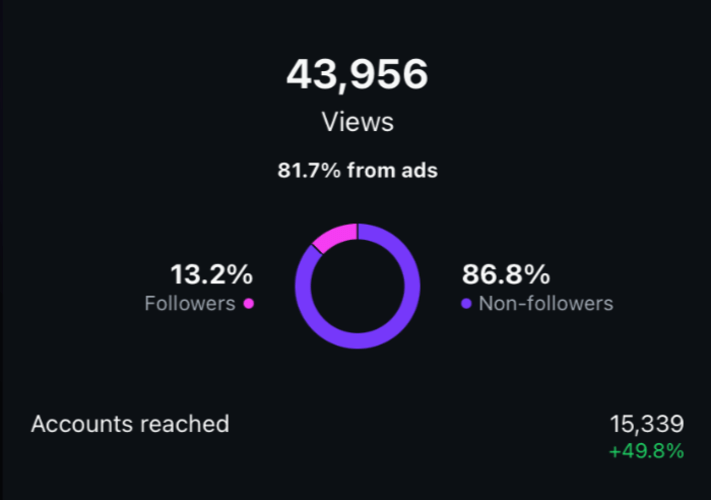
As you can see, you get the breakdown of:
- How much of this traffic was generated organically vs by paid ads?
- How many of these views were generated by your followers vs non-followers.
Plus, you can filter these stats for a specific period of time.
And check what are the most engaging post types:
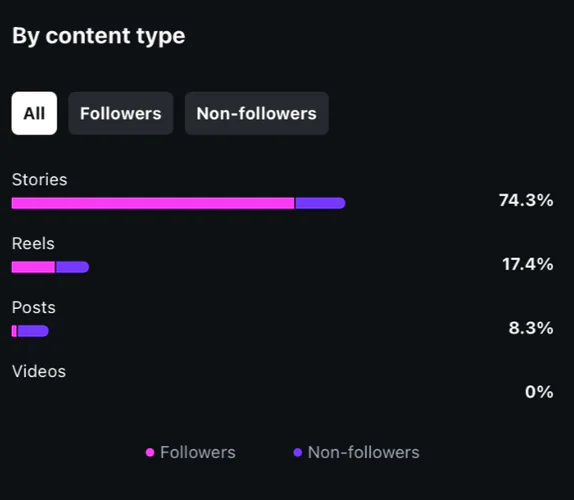
But, this method has one limitation – it will only show you reach based on your own profile. So, if someone shares your Instagram Reels – it won’t count.
So, my idea is to go for a more advanced external tool that will monitor also mentions beyond your profile. It’s just much more accurate.
Brand24 is perfect for that. It tracks mentions from public profiles and measures the reach for you.
Here’s what it looks like for Nara Smith:
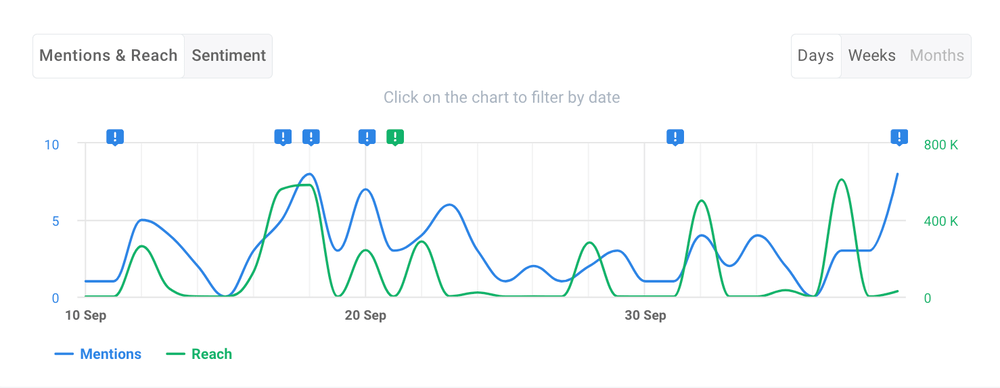
Then, if you want to access insights just about Insta – you can easily filter the results:
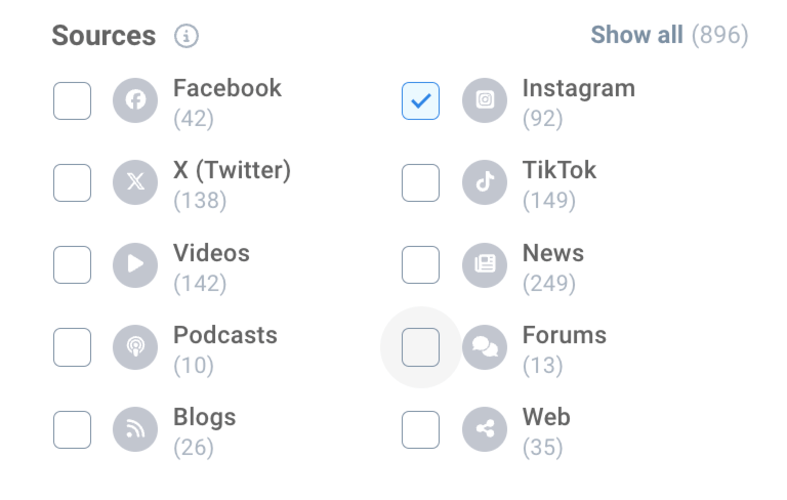
02 The volume of mentions
The volume of mentions is a key metric that tracks how often your brand is talked about online.
By tracking mentions, you will find out:
- Which social media platform is generating the most mentions of your brand?
- What topics or content types get your audience to discuss your brand?
- Opportunities to enhance your website traffic through potential influencer collaborations.
How to measure it?
You can access some of your mentions by going to “Notifications” > “Tags and Mentions”
This is what it looks like:
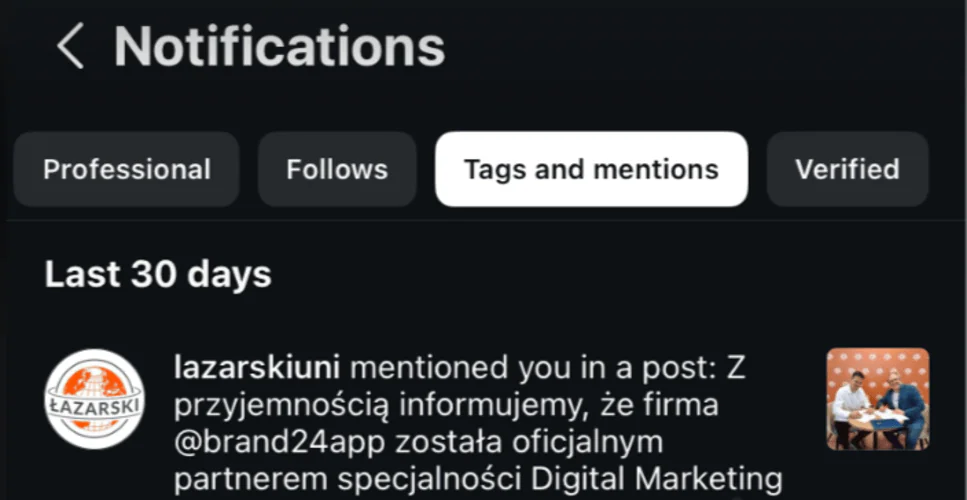
But it will show you only the tagged mentions. The ones without “@” aren’t tracked.
So, for a detailed and more accurate analysis – go for social listening tools like Brand24. These track the volume of mentions and provide ready-to-use analysis.
For example, Nara Smith got 92 mentions on Instagram over the last 30 days:
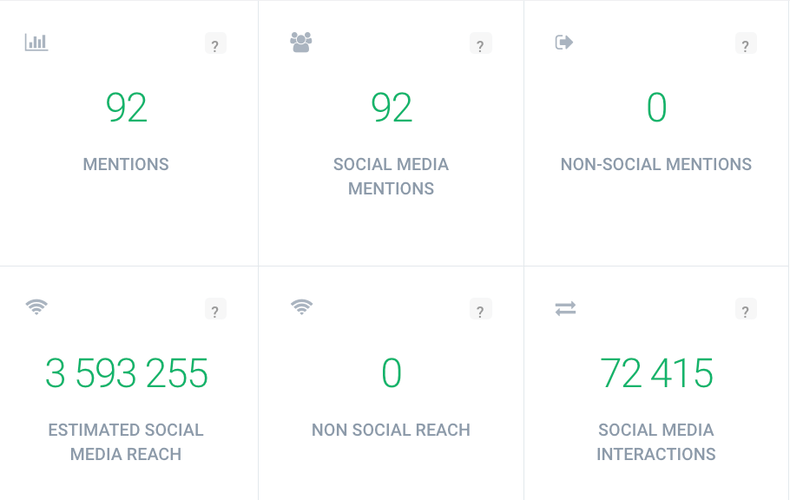
High mention volumes indicate strong visibility, engagement, and trend alignment. These are super important for Instagram performance and can attract more views, likes, and shares.
And I have to mention this feature – Anomaly Detector. It can help you understand what’s behind any unusual spikes in mentions.
It is a must for anyone getting lots of mentions and not having time to identify them all manually.
For example, analyzing the spike in reach on September 17, 2024, for Nara Smith can help correlate this increase to a fashion week and her appearance:
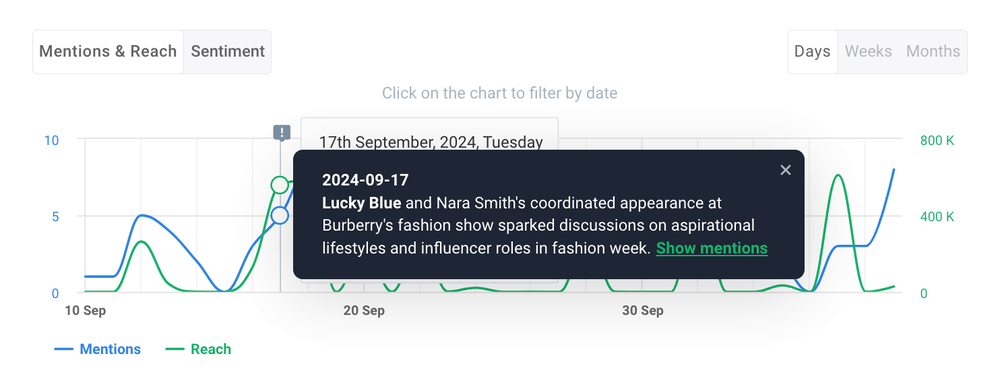
03 Engagement Rate
Engagement rate shows how well your audience interacts with your content. In general, it’s a perfect summary of your engagement metrics.
By tracking the engagement rate, you will find out the following:
- What are the most engaging post types?
- How engaged are your followers with your brand?
- Whether the posting time matters
This can all give you opportunities to refine your content strategy for better results. But to make that work, make sure to monitor engagement rates for individual posts and overall Instagram account performance.
A high average engagement rate means your audience loves what you post and will likely stay longer.
How to measure it?
Engagement Rate = (Total Interactions / Total Views) x 100
Here’s a quick example:
For a video with:
- 54,000 views
- 4,583 likes
- 17 comments
- 1,368 shares
- 82 saves
Total Interactions = 4,583 + 17 + 1,368 + 82 = 6,050
Engagement Rate = (6,050 / 54,000) x 100 ≈ 11.20%
If you have Instagram business profiles, you’ll access these stats in the “Insights” > “Content”.
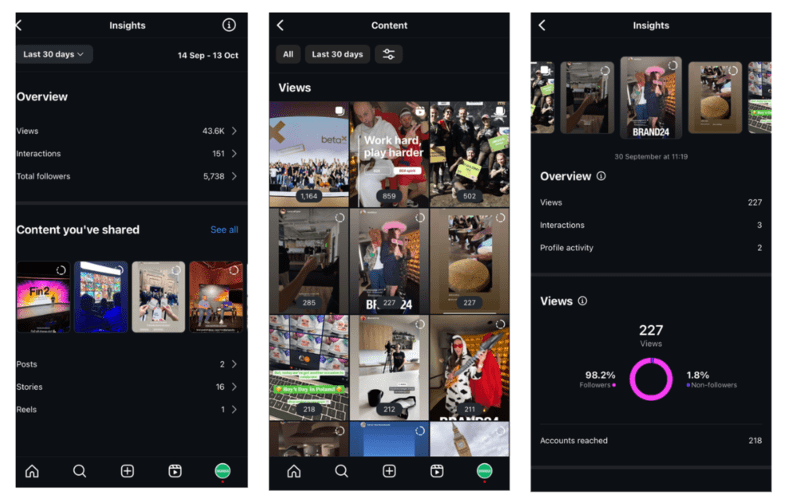
04 Followers growth
Followers growth is a metric that analyzes changes in your following numbers.
It’s simple yet effective in understanding how your community grows.
By tracking followers growth, you will find out:
- If what you post attracts new followers.
- The effectiveness of content strategy.
- Seasonal trends worth trying.
How to measure it?
You can access this data in your Instagram business profiles. Just go to: “Insights” > “Followers”
This is what it looks like. It also highlights the number of follows and unfollows:
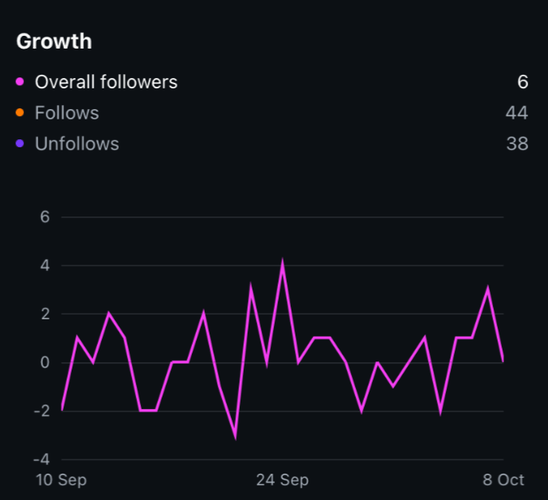
05 Share of voice
Share of Voice (SOV) is a simple way to benchmark against competitors. It shows a comparison of your brand’s market visibility vs your competitors.
By measuring Share of Voice, you will find out:
- Which competitors dominate conversations in your industry?
- Opportunities to increase your brand’s presence in key areas.
- Effectiveness of your PR and marketing efforts over time.
How to measure it?
Use tools for social listening like Brand24. These can analyze and compare you to any competitor you want.
Here’s the SOV comparison of two trending Influencer giants (Hailey Bieber and Nara Smith):
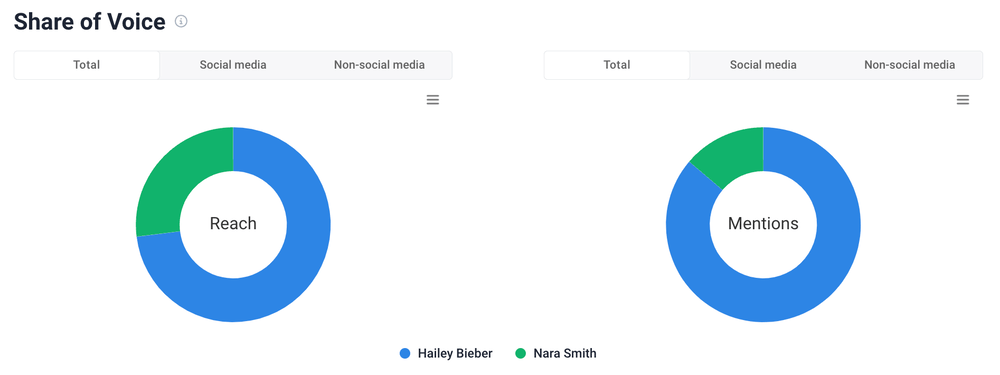
06 Presence Score
The Online Presence Score is a simplified metric about your visibility.
It combines more detailed metrics into one, general score. So, you can get a quick look when not having time for a comprehensive analysis.
By tracking the Presence Score, you will find out:
- How visible your brand is across various online channels.
- Your brand’s performance trends over time.
- Which post types are driving the most visibility?
- Potential areas for improvement in your digital strategy.
- The overall effectiveness of your brand’s online presence.

07 Sentiment
Why is it important to measure sentiment? Because it tells you how people really feel about your brand.
Sentiment analysis helps me understand if mentions are positive, negative, or neutral, allowing me to gauge my brand’s reputation at a glance.
By tracking sentiment, you’ll find out:
- How your audience feels about your latest posts or campaigns.
- If there are any negative trends that need to be addressed quickly.
- What emotions does your content trigger – are followers happy, excited, or disappointed?
How to measure?
You can try to use Instagram’s “Tags and Mentions” in “Insights” to see what people are saying about your brand. However, this only shows tagged mentions and won’t give a clear sentiment breakdown.
Plus, you’ll have to do everything manually.
For a more detailed view, I suggest using AI-powered social listening tools.
These tools automatically analyze mentions, determine their sentiment, and (fun fact!) can even detect specific emotions.
This way, you get a full picture of your brand’s reputation and can respond promptly to any negative mentions.
Here’s what a sentiment analysis looks like in Brand24:
- Sentiment chart – shows overall sentiment distribution.
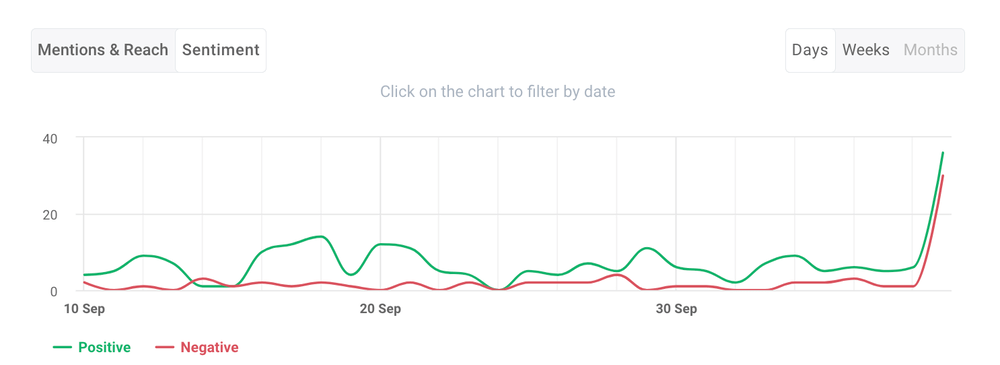
- Emotion analysis chart – breaks down emotions like joy, anger, or sadness.
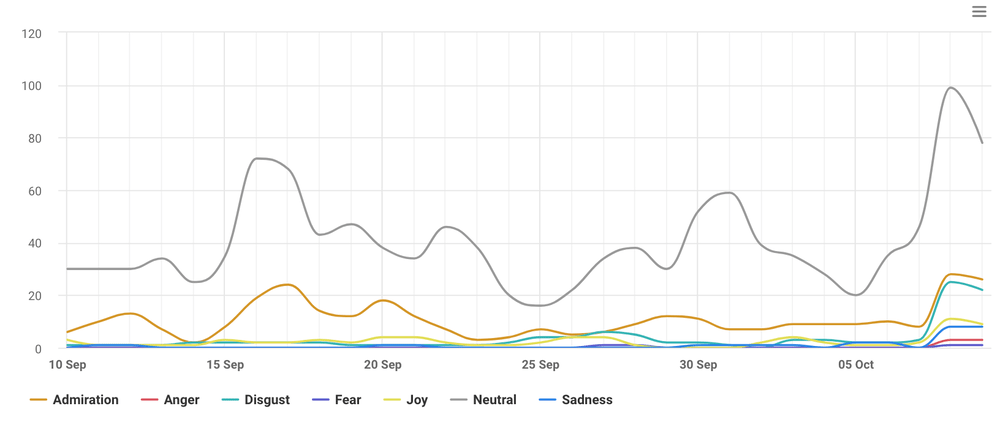
- Negativity chart – highlights the sources contributing most to negative mentions.
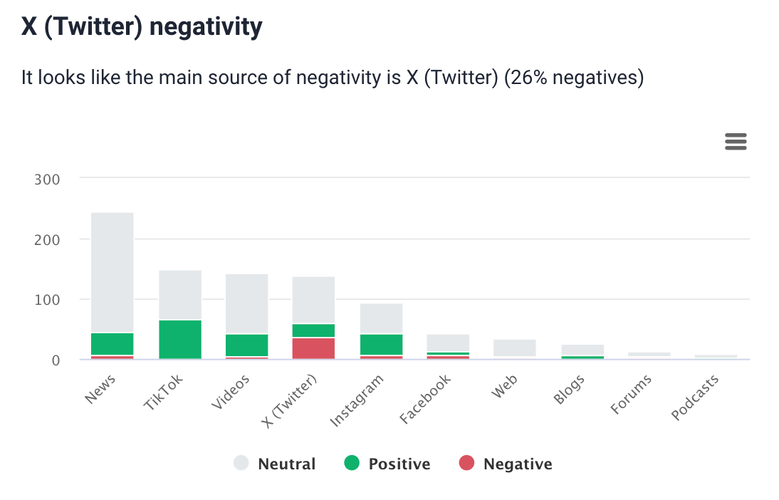
This type of analysis is a game-changer. It helps me identify what resonates with my audience and avoid potential PR issues before they blow up.
08 Geo analysis
My audience isn’t all in one place! And yours, probably, too.
Geo analysis helps me understand where my followers are located, which means I can tailor my content to match different regional preferences and trends.
Every location has its own seasonal patterns, holidays, and peak activity times.
By knowing where my followers are, I can optimize my posting schedule, language, and even the type of content I create.
By conducting geo analysis, you’ll find out:
- Which regions or countries does my content resonate with the most?
- What language should be used to connect better with specific audiences?
- The best times to post are based on local activity trends.
- Opportunities to create region-specific content (e.g., celebrating local holidays).
- How do different regions react to my content? Some topics may be popular in one area but not in others.
How to measure?
Instagram’s “Insights” feature offers some basic location data
Go to: “Insights” > “Followers” > “Top locations”
This is what it looks like:
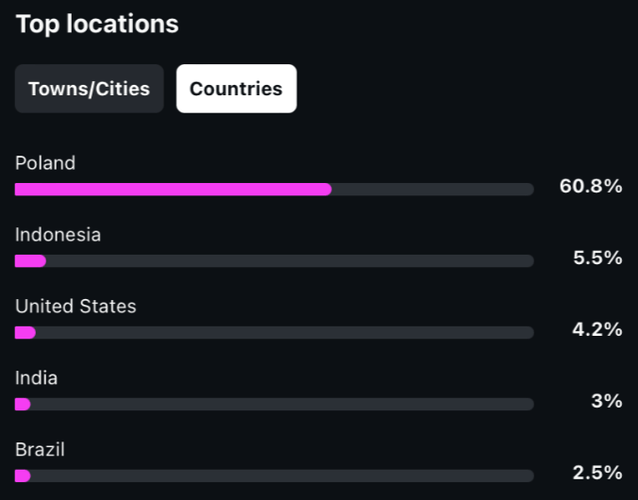
However, if I want a detailed analysis, I use the Brand24 geo analysis feature.
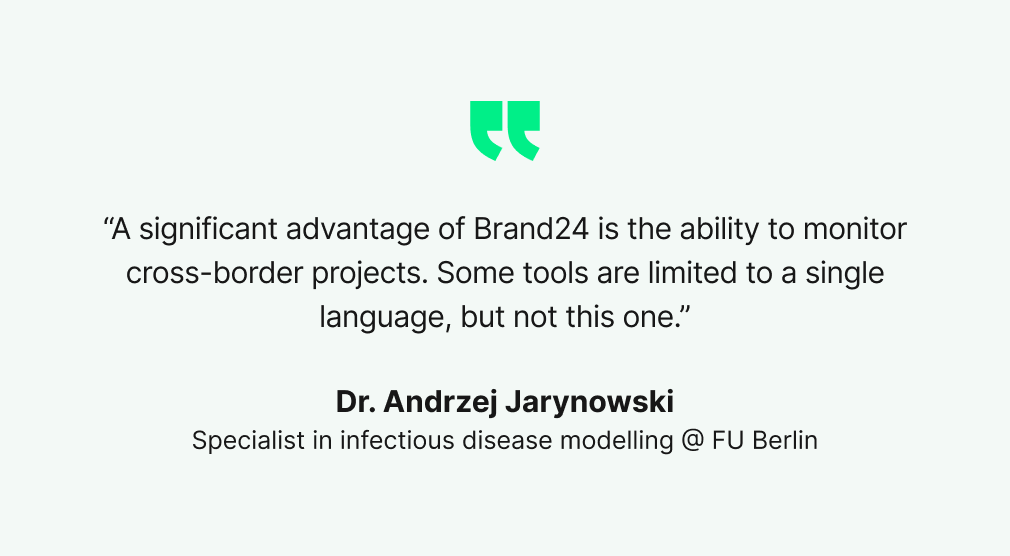
Discover our client’s success story — read the case study.
I can see a visual breakdown of my reach by country with an estimated reach they generate:
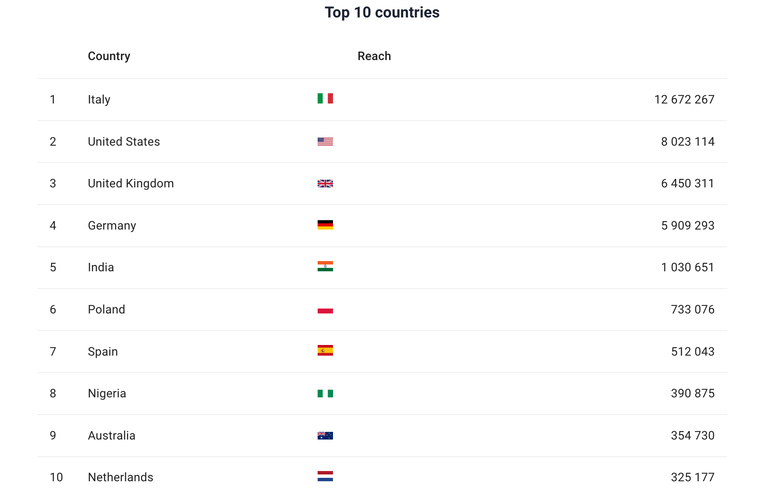
Tip: Benchmark the Instagram performance
To effectively measure your Instagram performance, it’s essential to regularly track and compare your results against competitors.
Benchmarking allows you to identify where you stand and uncover opportunities for growth.
Using the Comparison tab, I analyzed how Nara Smith and Hailey Bieber look in comparison:
- Total mentions: Nara Smith has 898 mentions compared to Hailey Bieber’s 5,637.
- Social media reach: Nara’s social media reach is 35 million, while Hailey leads with 66 million.
- Presence Score: Nara scores 31/100, whereas Hailey scores 46/100, indicating a stronger presence overall.
- User-generated content: Nara’s 614 pieces of UGC are overshadowed by Hailey’s 2,954.
By using these insights, you can pinpoint strengths and weaknesses, focus on areas for improvement, and refine your strategy to increase visibility and engagement.
For example, Nara may want to encourage her audience to create even more UGC.
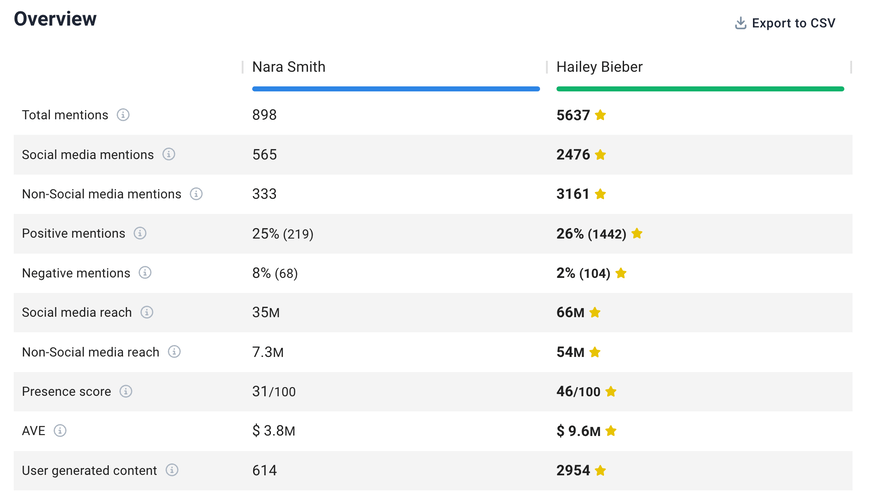
Conclusion
Effective Instagram marketing isn’t just about posting. It’s about knowing how that content is performing and continuously improving based on insights.
Monitoring your performance helps you understand what resonates with your audience, optimize your content, and finally – grow your reach and influence.
Final thoughts:
- Prioritize engagement over follower count. While follower growth is important, focus on actively engaging. A smaller, highly engaged audience is more valuable than a large, passive one.
- Regularly benchmark your performance to see how you stack up against others in your industry. Knowing where you stand will help you identify areas for improvement.
- Don’t be scared to experiment. Use performance metrics to try new content types, posting times, or collaboration strategies. Evaluate the results and continue to adapt your strategy based on what works best.
Ready to take your Instagram performance to the next level? Start with a Brand24 trial and unlock the full potential of analysis today!

